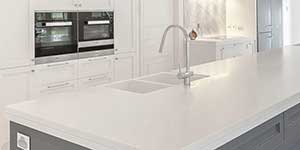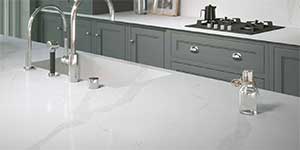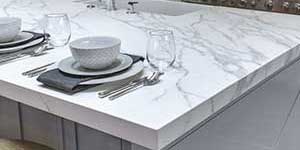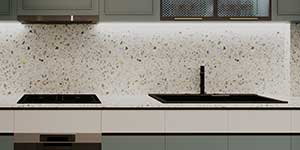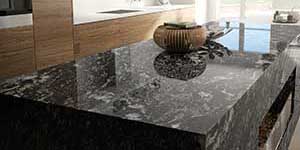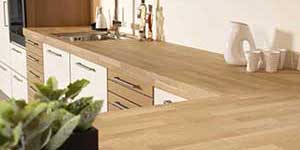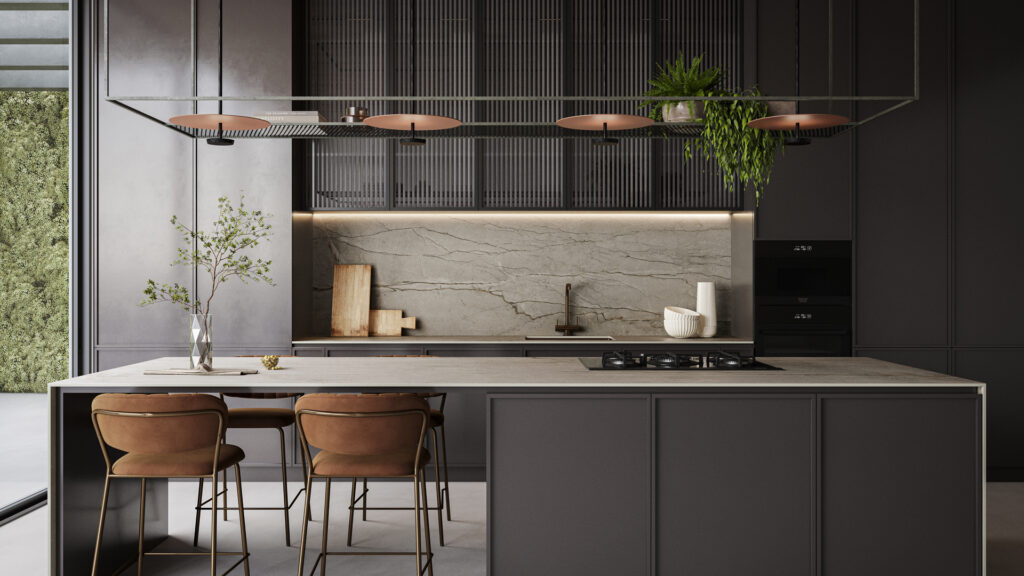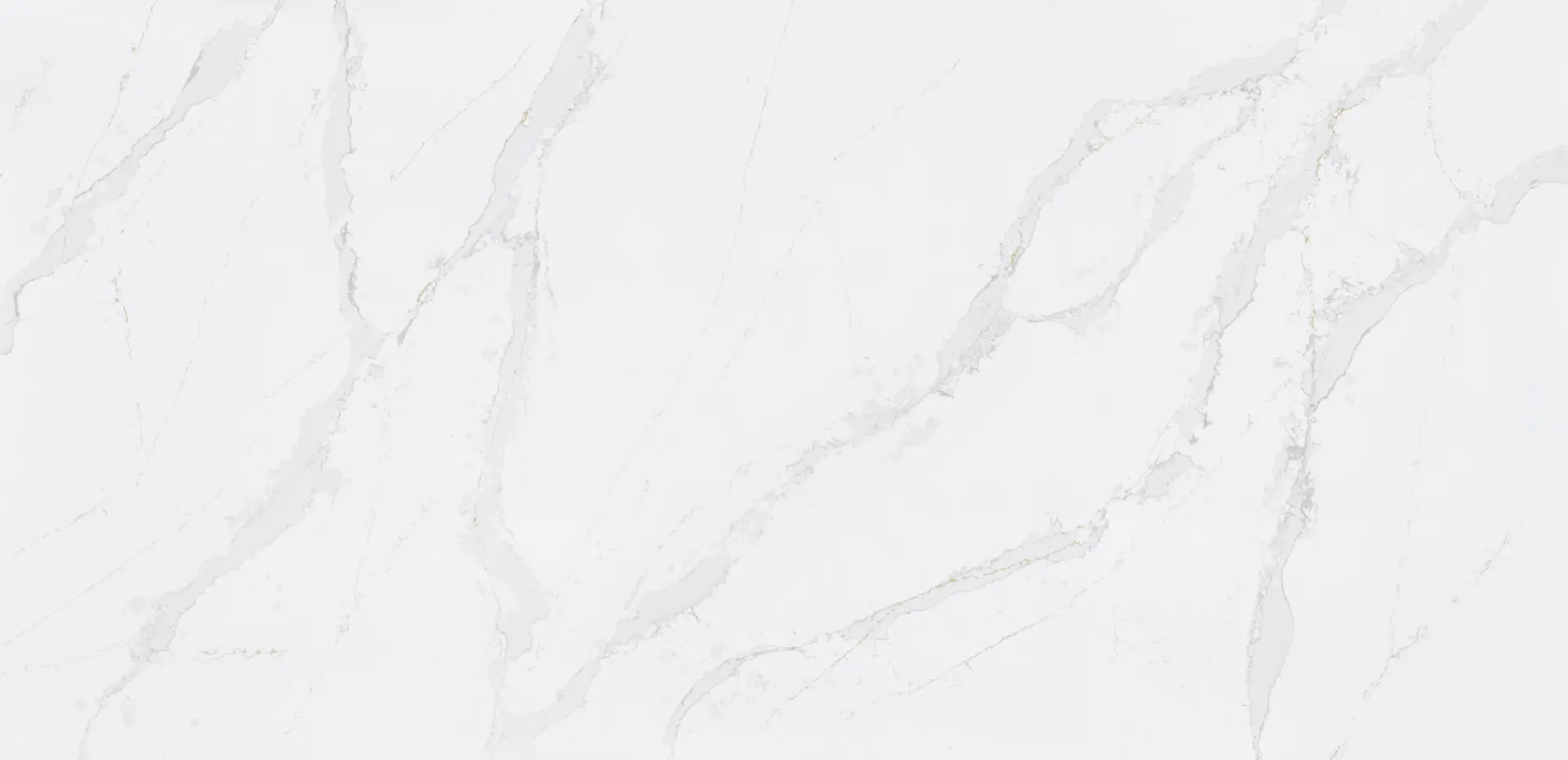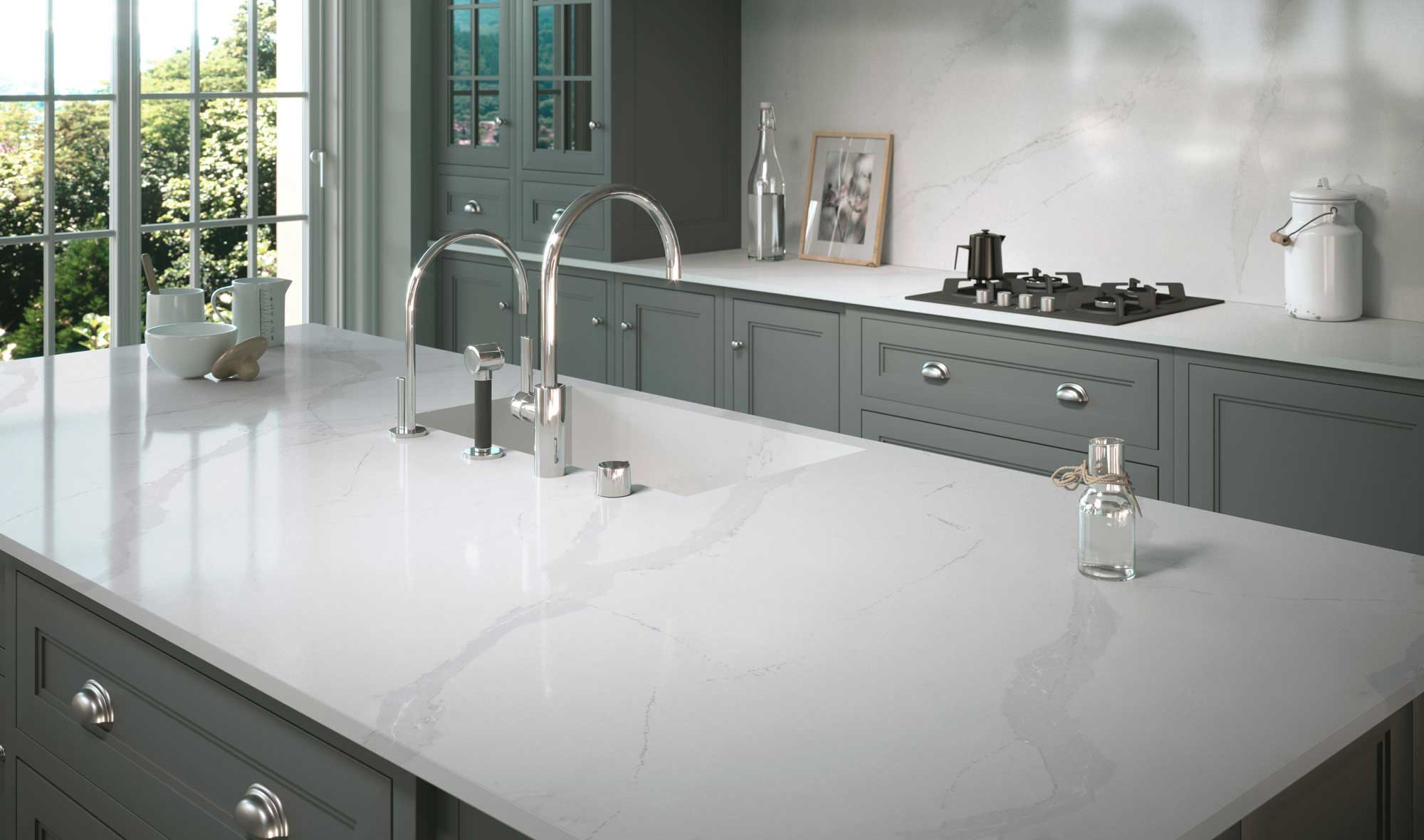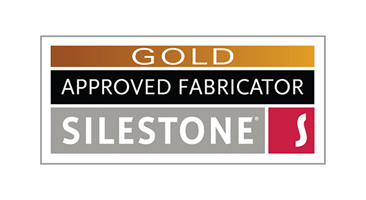Corian countertops are a popular choice for many homeowners due to their durability and low maintenance requirements. But if yours has become stained or damaged, you’ll need to know how to restore it.
Worktops.net is the online division of Bluestone Bespoke Worktops which has been supplying the kitchen and Bathroom sector for over 12 years in the UK. We are experts in Corian countertops and have put this article together to show you how you can keep yours looking its best.
For more detailed information read our FAQs, or contact us for expert advice. You can call us on 0330 088 3391 if you’d like to speak to a member of our team.
Is Corian easy to maintain?
Corian solid surface worktops do not require specialised care and cleaning and maintaining them is quite simple. However, it is important to preserve their pristine appearance by keeping them clean and taking preventive measures to protect the surface.
For daily care, clean your Corian worktops with a soft, or microfibre cloth, using warm water and mild soap, ammonia, or bleach. Rinse off with clean water and immediately wipe dry.
For stubborn dirt, use a mildly abrasive liquid cleaner and soft scrub Scotch-Brite sponge. If this does not work, rub the surface with a soft paste of bicarbonate of soda and water can be used. Do not use strong chemicals, oven cleaner or paint removers on any worktop surface.
Protect the worktop surface from excessive heat by using hot pads or trivets when putting down hot pans and pots. A chopping block and cutting board will go a long way towards avoiding scratches.
Does Corian scratch easily?
Corian worktops are manufactured of a solid, non-porous natural stone that can meet all the high demands of a modern kitchen surface. They are exceptionally hardwearing with outstanding stain resistance and they can weather plenty of knocks.
Even so, no worktop is indestructible. Because Corian has been manufactured with Resilience Technology ™ in a way that allows sanding, cutting, carving and so forth, these inherent benefits also mean that they react much like stone and wood worktops if treated harshly and the surface will show scratch marks, dull areas, and heat damage.
The different finishes will react differently and certain colours will show scratch marks more easily. For example,
- gloss and semi-gloss surfaces will show grazes and cuts more easily than the matte or volcano finish
- lighter colours in a matte finish will be least prone to show scratches and nicks
- sudden high heat will dull the shiny surface and dark colours more clearly
- darker colours in gloss finish will be more prone to showing oily handmarks than lighter colours
Can scratches and heat damage on Corian worktops be repaired?
The good news is that Corian solid surface worktops can be repaired fairly easily, even as a DIY project. The colour pigments are embedded throughout the thickness of the slab and will remain the same if layers are sanded off.
Unless the damage is severe, it mostly requires simple tools and materials and some patience to restore them to their original glory. Even severe damage can be restored by the professionals at Worktops.net to look as good as new.
Step 1 to remove light scratches
- Start with a mildly abrasive liquid cleaner on a soft damp sponge or cotton cloth and rub with circular motions, using mild pressure, first working from left to right and then back to front.
- Wash off the cleaner and thoroughly dry the surface.
- To remove vague circles that may have formed, repeat the process, but instead of circular motions, use long strokes from side to side; then up and down; then 45 degrees to the left; then 45 degrees to the right.
- Repeat the process until the scratches have disappeared.
Step 2 for slightly deeper scratches.
The procedure will be slightly different on the various finishes.
Worktops.net offers a Corian Worktop Care and Maintenance Kit that enables you to keep your worktops looking brand new for many years, or you can create your own maintenance kit.
Matte (non-shiny) surfaces:
Use ultra-fine and super-fine scouring pads (such as 3M Scotch Brite #7448 and #7445) with a mildly abrasive liquid cleaner.
Use the same method as described for light scratches.
Gloss and semi-gloss surfaces:
Use the same process as for matte surfaces, then use a low-speed polisher with a lambswool pad to buff the gloss surface with car polish until the gloss has been restored.
Step 3 for more severe scratches
Hints
- An air-driven orbital sander is recommended if using mist spray. An electrically operated sander cannot be used with water.
- Use only mild pressure. An orbital sander loses its effectiveness if pressed too hard.
- Avoid concentrating on seam areas, edges or scratched areas. It is important to get a uniform finish. Make sure seams remain even.
- Use different sanding motions to avoid patterns when sanding and gradually use finer grit sandpaper.
- Change sanding discs often as they become clogged and lose their abrasiveness.
- After each sanding pattern, wipe the surface with a damp cloth or water to remove dust and wipe dry.
- Control dust by masking off the area, using water paper and mist spray, and setting up a vacuum cleaner to remove the dust as you sand. (If you don’t have a dust extractor, devise your own. One possibility is to set up a pipe or a length of trunking with a long slit along the back of the worktop, connected to the vacuum cleaner.)
- The steps below are progressive from matte to gloss finishes. Start at the beginning and work your way to the last step for your particular finish.
- In very severe cases, call Worktops.net to send a specialist team to repair damage, scratches, or stains.
Lighter colours
Matte finish with light and dark colours
- Use a P150 (100 microns) sanding disc and sand the entire surface in overlapping circular movements, first left to right and back right to left, repeating the sanding in overlapping “lanes” until the whole surface has been covered; then the entire surface in overlapping circular motions up and down; then again at a 45-degree angle to the left, and finally at a 45-degree angle to the right.
- Inspect the entire surface for scratches or sanding patterns and repeat the process, or lightly sand over those to remove them, avoiding uneven surfaces or hollows.
- Repeat these steps with P240 (60 microns) sandpaper.
- Remove all dust and wipe the surface clean with a soft, damp cloth.
- If satisfied that all scratches have been removed, use a Scotch-Brite 7447 (maroon disc) to buff the entire surface in the same patterns as sanding.
Semi-gloss finish with lighter colours
- Complete all the steps for matte finishes, except the last one to buff the surface with Scotch-Brite. Instead, continue with these steps.
- Repeat all the sanding steps above with P400 (30 microns) sandpaper.
- Wipe the entire top with a clean, damp cloth.
- If satisfied that all scratches have been removed, use Scotch-Brite 7448 (grey) to buff the entire surface in the same patterns as when sanding.
Gloss finish with lighter colours
- Complete all the steps for matte and semi-gloss finishes, except the last one to buff the surface with Scotch-Brite. Instead, continue with these steps.
- Repeat all the sanding steps as described above, using P600 (25 microns) sandpaper.
- Use a low-speed lambswool polisher and buff the entire surface with Corian polish, car polish or cutting compound, until the gloss is restored.
- Wash off any residual polish and wipe the countertop dry with a soft cloth.
Darker colours
Semi-gloss finish with dark colours
- Use a P150 (100 microns) sanding disc and sand the entire surface in overlapping circular movements, first left to right and back right to left, repeating the sanding in overlapping “lanes” until the whole surface has been covered; then the entire surface in overlapping circular motions up and down; then again at a 45-degree angle to the left, and finally at a 45-degree angle to the right.
- Inspect the entire surface for scratches or sanding patterns and repeat the process, or lightly sand over those to remove them, avoiding uneven surfaces or hollows.
- Repeat these steps with P240 (60 microns) sandpaper.
- Repeat all the sanding steps above with P400 (30 microns) sandpaper.
- Repeat the process with P600 (25 microns) sandpaper.
- Repeat the process with P1000 (15 microns) sandpaper.
- If satisfied that all scratches have been removed, use Scotch-Brite 7448 (grey) to buff the entire surface in the same patterns as when sanding until a semi-gloss finish is achieved.
Gloss finish with darker colours
- Complete all the steps for darker colour semi-gloss finishes, except the last one to buff the surface with Scotch-Brite. Instead, continue with these steps.
- Repeat all the sanding steps as described above, using 1500 (12 microns) sandpaper.
- Use a low-speed lambswool polisher and buff the entire surface with Corian polish, car polish or cutting compound, until the gloss is restored.
- Wash off any residual polish and wipe the countertop dry with a soft cloth.
Does Corian stain easily?
Corian is a completely non-porous surface which will not absorb liquids. Liquids that are left for a long time may cause surface stains. The only reason Corian appears to be stained is when it has been damaged by high or sudden heat or water marks or residues that build up over a long period.
Common spills, like vinegar, tea, coffee, lemon juice, ketchup, dyes, red wine, and vegetable spills can simply be wiped off when they happen and will not leave a stain.
How do I remove stains and heat marks from my Corian Worktops?
Again, we have good news! Most stains can easily be removed and even the more stubborn stains can be removed with little effort.
Some ideas for removing stains from your Corian worktops:
- Spray lemon juice or vinegar on the stain and leave for a few minutes. Then rinse it thoroughly with clean water and dry the countertop properly with a soft cloth.
- The next step is to use a microfibre cloth or soft scrub sponge, to rub on a solution of spirit vinegar and bicarbonate of soda; or bleach diluted 50:50 with warm water. Use small overlapping circular motions until clean, rinsed off with clean water and dried thoroughly with a soft cloth.
- If the stains do not come off with the methods above, spray it with one of the solutions suggested, leave overnight and try again the next morning.
- Hard water stains can be removed with a spirit vinegar solution or descaler.
- Worktops.net offers a Corian worktops maintenance and cleaning kit to remove stains.
- Avoid window cleaners or any other cleaner that leaves a waxy residue, or strong cleaners which will ultimately dull the surface.
- For really stubborn stains that cannot be removed with the methods above, Corian suggests using Viakal gel.
For more detailed information read our FAQs, or contact us for expert advice. You can call us on 0330 088 3391 if you’d like to speak to a member of our team.
Other inspiring articles
Exclusive 40% OFF on 6 colours of the new Caesarstone Porcelain Collection
Caesarstone, a world-renowned leader in premium surface materials, has expanded its impressive portfolio by introducing a new line of porcelain worktops. Famous for their high-quality quartz surfaces, Caesarstone’s venture into porcelain showcases their dedication [...]
Why Silestone Eternal Calacatta Gold is one of the UK’s best selling worktop colours
In the world of interior design, the kitchen is more than just a functional space; it's the heart of the home, a place where style meets practicality. One of the standout stars in kitchen [...]
A Solid Choice: Why Solid Surface Worktops are a Top Pick for your Kitchen
Solid surface worktops, such as Corian, Hanex, and Hi-macs, have been steadily gaining popularity in the world of kitchen design and renovation. While there's a plethora of worktop materials to choose from, solid surface [...]
Choosing the Perfect Kitchen Worktop
A comprehensive guide to Quartz, Solid Surface, Ultra Compact, Granite, and Wood When it comes to designing your dream kitchen, one of the most crucial decisions you'll make is selecting the perfect [...]

